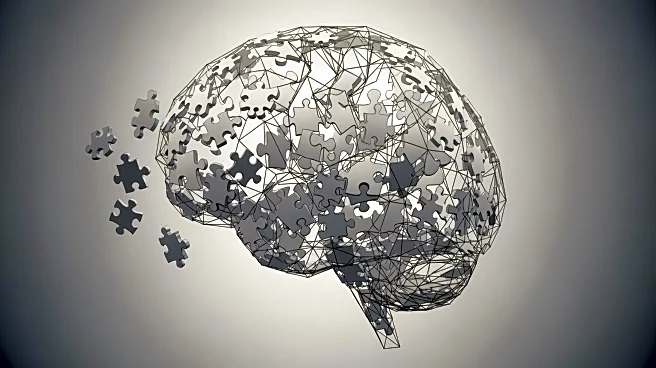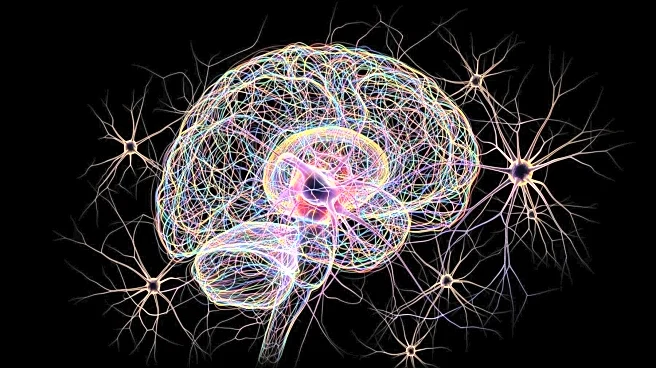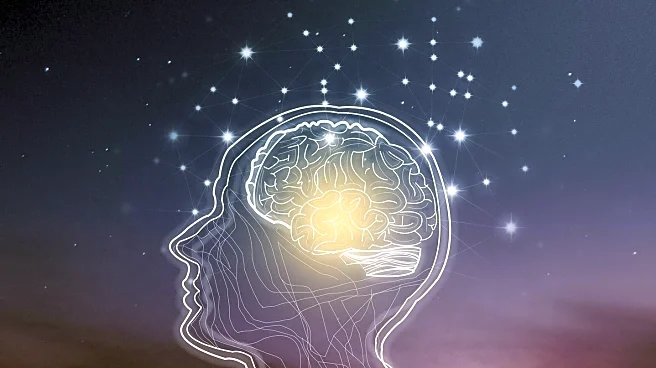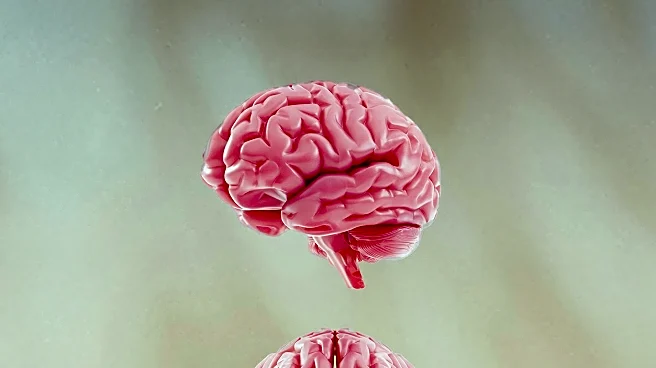What's Happening?
A study published in Nature Communications has found that the human brain undergoes significant shape changes as it ages, rather than merely shrinking. Researchers analyzed over 2,600 brain scans from
adults aged 30 to 97, identifying patterns of 'expansion' and 'compression' in brain regions. These changes are linked to cognitive decline and may offer a new method for detecting dementia risk before symptoms appear. The study highlights that the brain's geometry affects its function, with shifts in position and shape potentially disrupting internal coordination. The research suggests that understanding brain shape changes could provide insights into healthy aging and neurodegenerative diseases like Alzheimer's.
Why It's Important?
The findings of this study are significant as they offer a new perspective on brain aging, focusing on shape rather than volume loss. This approach could lead to early detection of dementia and other cognitive impairments, potentially improving patient outcomes. By understanding how brain geometry affects function, researchers can develop new strategies for preventing or mitigating age-related cognitive decline. The study also opens avenues for exploring the mechanical stress on the brain and its role in neurodegenerative diseases, which could lead to innovative treatments and interventions.
What's Next?
Future research may focus on long-term studies to track individual brain changes over time, providing more detailed insights into aging processes. Additionally, investigations into the biological mechanisms driving these shape changes could reveal new targets for therapeutic intervention. The study suggests the possibility of developing early warning systems based on brain shape, which could identify individuals at risk for cognitive impairment before symptoms manifest.
Beyond the Headlines
The study's approach to brain aging challenges traditional views that focus solely on volume loss. By considering the brain's geometry, researchers can explore how structural changes impact communication between regions, potentially leading to functional decline. This perspective may also explain why certain brain areas, like the entorhinal cortex, are particularly vulnerable to age-related damage, offering new insights into Alzheimer's pathology.












